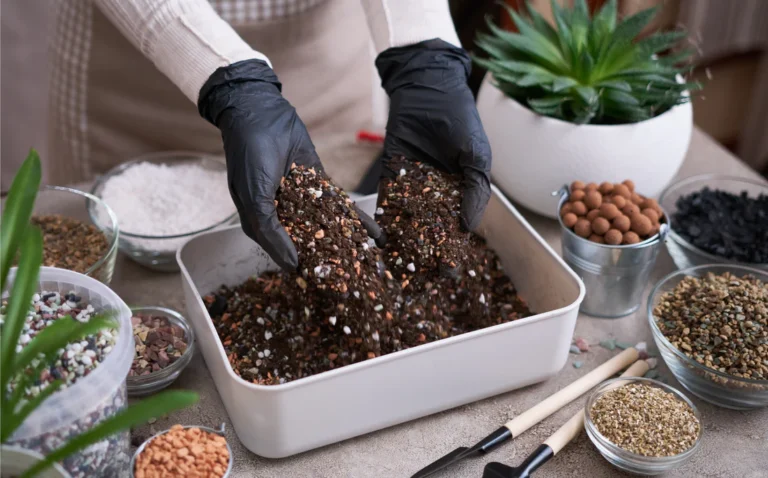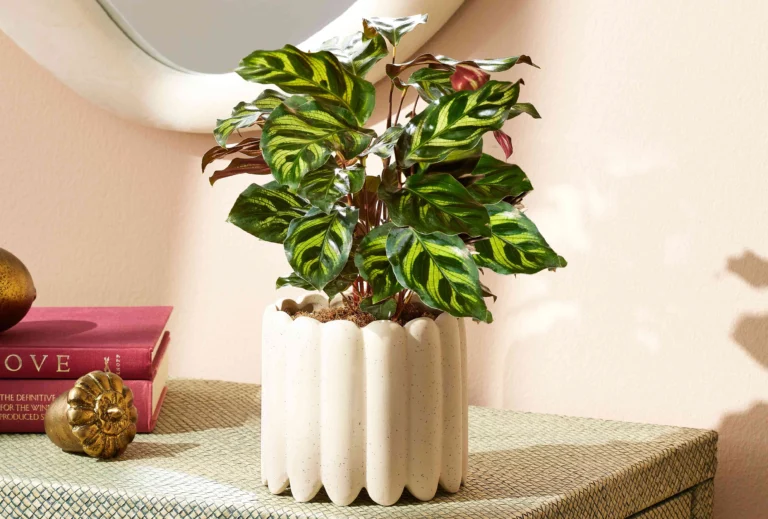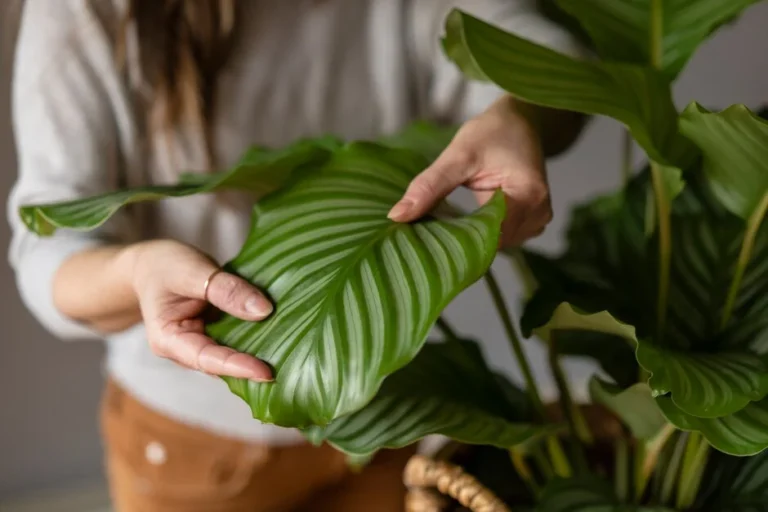Calathea Rufibarba – Origin, Varieties, Care, Propagation
So-called Furry Feather or Velvet Calathea, the Calathea Rufibarba, is a tall calathea variety with red stems. The plant produces long, slender, soft, and furry green leaves with maroon undersides. The leaf tops and velvety undersides feature little hairs when the plant matures.
In this blog post, we will briefly discuss what Calathea Rufibarba is, its origin, identification, different varieties, care requirements, and propagation methods.
So, let’s dive in!

What is Calathea Rufibarba? Origin and Identification
Calathea Rufibarba, also called as Furry Feather or Velvet Calathea is a tropical plant in the Marantaceae family. It is a clump-forming evergreen perennial that shows upright growth and produces tall, slender leaves. The plant can grow up to 30-60 cm in height when given right growth conditions. Its, small, yellow, or ornage flowers further add to its charm.
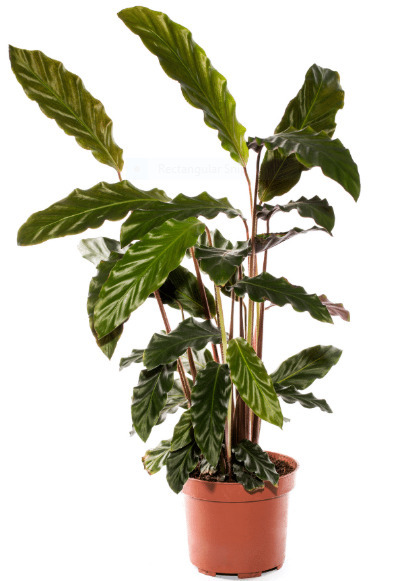
Origin:
Calathea Rufibarba originates from the tropical rainforests of Central and South America, but can also be grown as an indoor houseplant.
Identification of Calathea Rufibarba
This ornamental plant, “velvet Calathe,a”has prominent foliage characters, including medium green leaf tops and velvety undersides that distinguish it from other calathea species. Its leaf stems conceal fine reddish-brown hai,rs making them look furry which gives it its “furry” name.
The patterns on Calathea rufibarba leaves are minimal because they show delicate wavy leaf edges and an attractive curving growth form. After full maturity, a Calathea rufibarba plant grows between 60 to 90 centimetres tall while its leaves reach lengths of up to 30 cm. The emerging young leaves start as compact rolls before expanding into a mature shape.
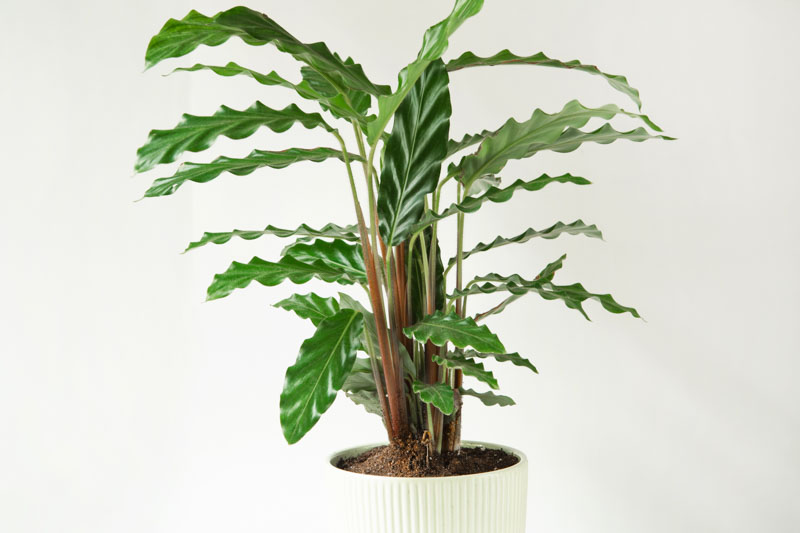
Key Identification Markers
Morphological Characteristics and Blooming Patterns of Calathea rufibarba
Naming Confusion between Calathea rufibarba and Its Relative Plants
Botanists have not settled the distinction between Calathea rufibarba and Goeppertia rufibarba, although plant experts routinely exchange these names to refer to the same plant. Goeppertia warscewiczii, together with Calathea warscewiczii, remains closely related to Calathea rufibarba, yet they do not possess the same characteristic hairs on their leaf undersides.
People normally assign the same names to these plants even though researchers have not established these plants as separate species. The improper labeling of velvet Calatheas leads to mega-confusion since this name serves Calathea warscewiczii just as it does Calathea rufibarba.
What Are the Different Varieties or Types of Calathea Rufibarba?
The commercial market offers three substantial types of Calathea rufibarba. These varieties or types share comparable looks, therefore they become hard to differentiate from each other.
1. Calathea Rufibarba ‘Wavestar’
Calathea Rufibarba Wavester produces slender, light green leaves with elegant thinness can reach up to 60 cm in height.
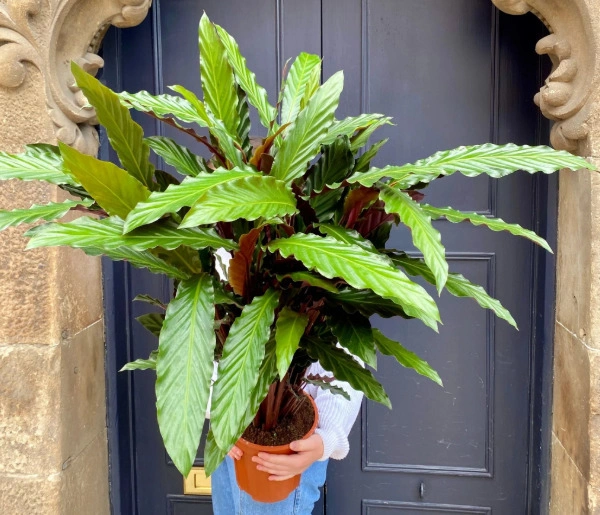
2. Blue Grass Calathea Rufibarba
This compact variety develops to a height of 45 cm while presenting blue-green leaves that extend in length.
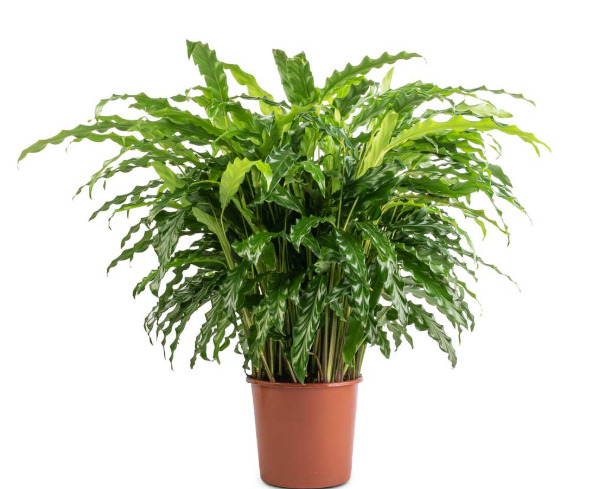
3. Calathea Rufibarba ‘Elgergrass’
Calathea Rufibarba Elgergrass can reach up to 45 cm in height while showing elegant green leaves combined with purple undersides.
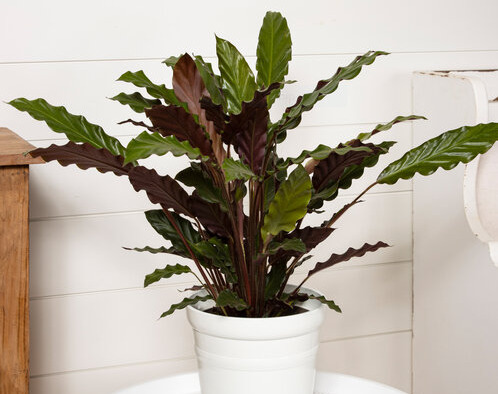
The soft velvety texture of Calathea rufibarba exists in all three varieties, together with their appealing leaf appearance.
How to Care for Your Calathea Rufibarba? Light, Watering, Humidity, Temperature, and Other Requirements
Caring for your Calathea Rufibarba is easy. Follow the requirements and tips below to care for your furry feather:
1. Calathea Rufibarba Light Requirements
This plant needs plenty of bright, indirect light to thrive. Exposure to direct sunlight should be avoided since it will scorch the leaves of this plant. The perfect position for this plant is 3-4 feet away from an east-facing spot that receives little sunlight or in a place with similar shading on the south side.
2. Calathea Rufibarba Watering Requirements
Calathea Rufibarba loves to grow in moist but not soggy soil. Water your Velvet Calathea once a week.
Maintain the soil moisture at a steady level that is not too saturated. Drench the soil with filtered or rainwater only after the top 1 inch dries out to prevent the brown tips that tap water chemicals cause on the leaves.
3. Humidity Requirements for Calathea Rufibarba
The Furry feather plant requires high humidity (70 %) for optimum growth. Although the plant can tolerate periods with low humidity, it will dry out if this continues for a long time. To increase humidity, you should place pebbles in a tray with a humidifier running or mist the leaves with distilled water to prevent leaf spots.
4. Calathea Rufibarba Temperature Requirements
The Furry feather calathea loves warm temperatures to grow well.
Between summertime, temperatures of 22°C to 30 °C is the suitable range for this plant. The ideal winter temperature range for this plant should be between 18 °C and 20 °C. Keep the plant covered from excessive drafts and rapid changes in temperatures which are lower than 15°C.
5. Soil & Potting Requirements for Velvet Calathea
The soil that retains enough moisture and drains well is a perfect blend for growing Calathea Rufibarba. Soggy soil is not ideal as it can lead to overwatering that causes leaves to turn yellow and crinkled.
They require soil consisting of coco coir together with perlite and orchid bark because it should drain well without using peat. Repot your velvet calathea every year in a shallow pot with drainage holes.
6. When to Fertilize Your Calathea Rufbarba?
Fertilize your Calathea rufibarba when it is actively growing. Spring and summer are its peak growing seasons. During this period fertilize the plant with diluted balanced fertilizer using half-strength concentrations. Skip feeding in winter as plant is not actively growing. Therefore, it requires least nutrients for feeding.
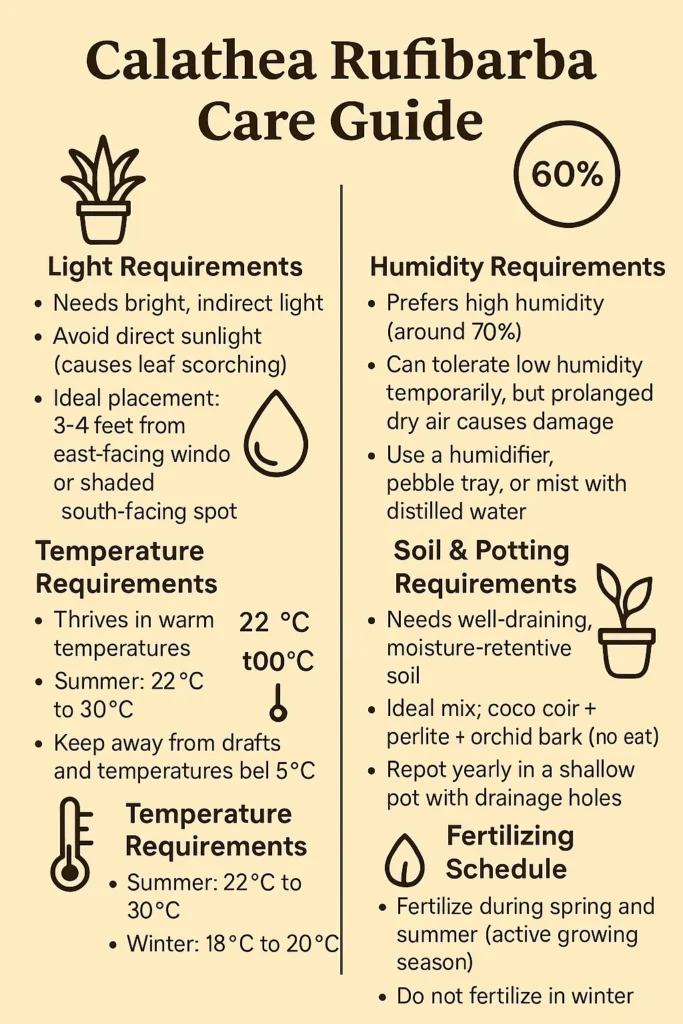
How to Propagate Your Calathea Rufibarba? Step-By-Step Guide to Follow
The best method for Calathea rufibarba propagation occurs through division during early spring or summer repotting events. Here’s how:
Common Problems with Calathea Rufibarba
Calathea Rufibarba can face the following common problems:
1. Brown Leaf Edges/Tips:
Low humidity and fluoride in tap water can be the possible causes of brown leaf edges of Calathea Rufibarba. You can use distilled or rainwater instead of tap water and increase humidity around the plant to tackle this problem.
2. Curling Leaves:
Calathea rufibarba can produce curling leaves due to underwatering and low humidity. Tackle this issue by ensuring consistent moisture and raising the humidity levels around the plant.
3. Fading Leaf Color:
Fading leaf of Furry feather can be due insufficient light. Providing bright but indirect light can solve the issue easily.
Pest and Disease Attack on Calathea Rufibarba
Pest Attack:
The Following pests can infest your Calathe Rufibarba:
Also Check How To Care Calathea?
FAQ’s
1. How can I prohibit my Calatheas rufibarba from drying out?
Keep the soil damp without becoming waterlogged throughout the day. The first inch of soil should dry out slightly before you provide water. Tap water filtered or distilled, or rainwater, should be used to prevent brown tip discolouration that results from fluoride and other tap water chemicals.
2. What is the reason behind the development of brown edges on my Calatheas rufibarba?
Your Calathea develops brown edge damage because of the water you supply from the tap. The accumulation of tap water elements like salts chlorine minerals and fluAoride in the plant soil leads to leaf tip burning that causes brown discoloration followed by curling.
3. Where is the best place to put a Calathea?
A bright setting with indirect sunlight produces the best growth environment for Calatheas. The optimal window placement for Calatheas during summer months should be near north- or east-facings. Using south-facing windowsills in the winter months becomes a better option since light levels tend to be lower during that period.
Final Thoughts
Calathea rufibarba is an amazing ornamental plant that stands out with sparkling features. It originates from Brazil’s tropical plants and is now worldwide famous for its attractive display. The plant requires minimal care, including ensuring enough bright indirect light, regular watering once a week, maintaining enough humidity and lighting, and fertilizing it during its growth seasons.
Following these tips will keep your Furry Feather thriving and producing stunning foliage.

About Author
Hi, I’m Emily Davis, a passionate tropical plant enthusiast dedicated to sharing knowledge and expertise with plant lovers. Through his blog, I will provide guides, tips, and tricks for caring for tropical houseplants species like Alocasia, Anthurium, Calathea, Philodendron, Begonia, and many more that will help readers bring a touch of paradise into their own homes. With a deep love for the vibrant colors and lush textures of tropical flora, I’m committed to inspiring others to cultivate their own tropical oasis.

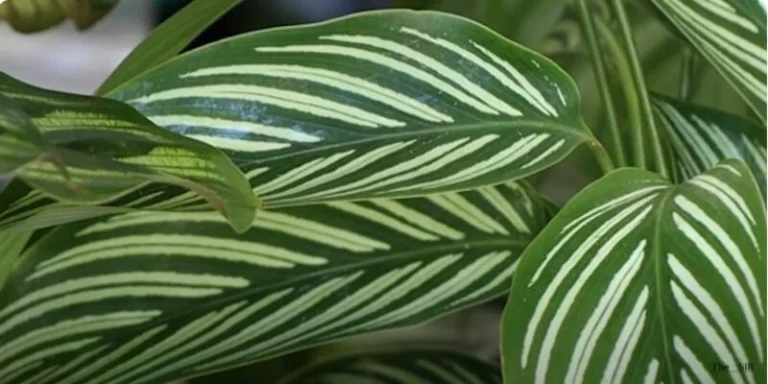
![Types of Calathea Plants: 25 Varieties to Grow Indoors [with images] 10 Calathea](https://tropicalplantscare.com/wp-content/uploads/2025/04/Calathea-2-768x576.webp)
